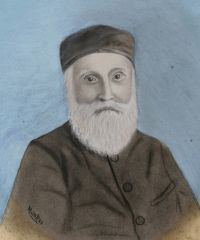Name Jan Palm Role Composer | Died December 13, 1906 | |
 | ||
Robert rojer jan gerard palm el 18 de febrero wals
Jan Gerard Palm (2 June 1831 – 13 December 1906) was a 19th-century composer. Palm is often referred to as the "father of Curaçao's classical music".
Contents
- Robert rojer jan gerard palm el 18 de febrero wals
- Jan gerard palm muziek part 1
- Biography
- Compositions
- Media
- References
Jan gerard palm muziek part 1
Biography
Born in Curaçao, Palm had directed several music ensembles by a relatively young age. In 1859, he was appointed music director of the citizen's guard orchestra in Curaçao. Palm played several musical instruments such as piano, organ, lute, clarinet, flute and mandolin. As an organist, Palm played for many years in the Jewish synagogue Emanu-El and Mikvé Israel, the Protestant Fort Church and the Lodge Igualdad in Curaçao. He was also a regular contributor to the widely read and influential periodical Notas y Letras (Notes and Letters). This periodical was issued in Curaçao in the period 1886–1888, with numerous subscribers throughout Latin America and the Caribbean.
When Palm died at the age of 75, on 13 December 1906, gifted musicians and composers of the Palm family such as Rudolph Palm (1880–1950), John Palm (1885–1925), Toni Palm (1885–1963) and Jacobo Palm (1887–1982) followed in the footsteps set by their maestro and grandfather and further passed this tradition on to their own descendants such as Albert Palm (1903–1958), Edgar Palm (1905–1998) and Robert Rojer (1939).
Compositions
As a composer, Palm can be characterized as both original and productive. One of his well-known statements used to be that a good composition should include at least one surprising change. Palm wrote more than 180 compositions. His waltzes and mazurkas can be characterized by a rich use of harmonic variations. His polkas, marches and galop reveal his buoyant life style. Palm was also often progressive, in the sense of not being afraid of using chords that were relatively unusual for his time. The rhythms that he wrote for each of his danzas are typically complex, very creole and sensual. In the dominantly prudish 19th century, Jan Gerard Palm was the only composer who dared to write erotic tumbas.
Alongside dance music written for the piano, Palm also wrote larger works for the orchestra and for piano and violin. Examples of the latter are the fantasies and serenades. Finally he also wrote several pieces for services in the synagogue, the protestant church and the Lodge.
